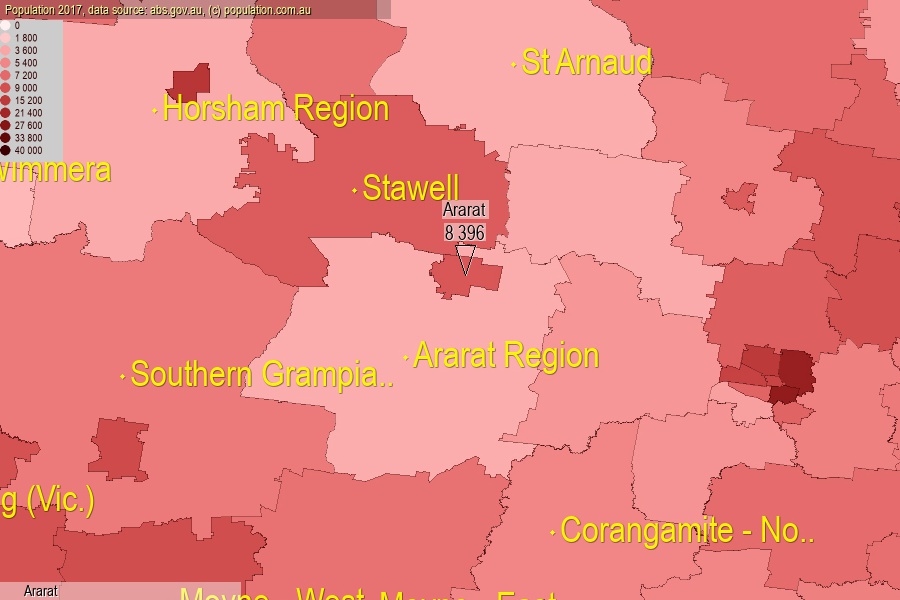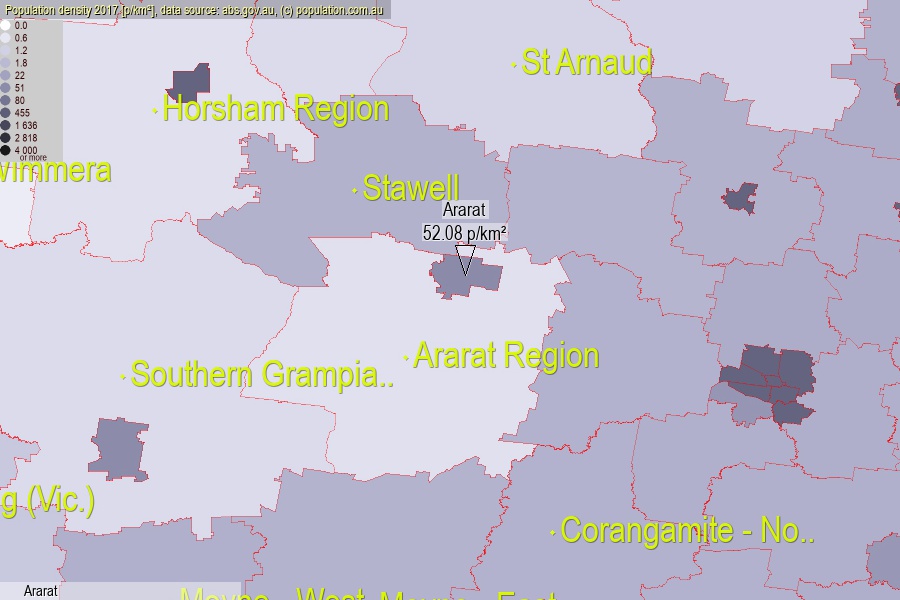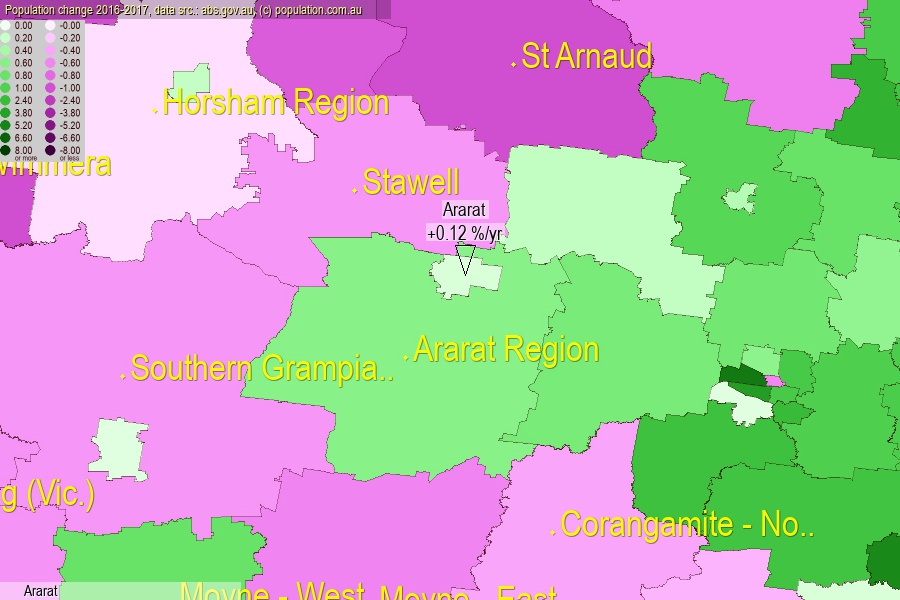 population.com.au
population.com.auLast official estimated population of Ararat (as Statistical Area Level 2) was 8 396 people (on 2017-06-30)[2]. This was 0.03% of total Australian population and 0.131% of VIC population. Area of Ararat is 161.20 km², in this year population density was 52.08 p/km² . If population growth rate would be same as in period 2016-2017 (+0.12%/yr), Ararat population in 2025 would be 8 476. [0]



Click to enlarge. Ararat is located in the center of the images.
Population [people], population density [p./km²] and population change [%/year] [2]
View borders » (new window) [4]
[1991-1992] -0.11 %/Yr.
[1992-1993] -0.97 %/Yr.
[1993-1994] -1.58 %/Yr.
[1994-1995] -1.19 %/Yr.
[1995-1996] -1.74 %/Yr.
[1996-1997] -1.36 %/Yr.
[1997-1998] -0.89 %/Yr.
[1998-1999] -0.45 %/Yr.
[1999-2000] -0.55 %/Yr.
[2000-2001] -0.59 %/Yr.
[2001-2002] -0.13 %/Yr.
[2002-2003] -0.21 %/Yr.
[2003-2004] -0.10 %/Yr.
[2004-2005] -0.12 %/Yr.
[2005-2006] +0.01 %/Yr.
[2006-2007] -0.65 %/Yr.
[2007-2008] +0.25 %/Yr.
[2008-2009] +0.61 %/Yr.
[2009-2010] +0.49 %/Yr.
[2010-2011] +0.09 %/Yr.
[2011-2012] +0.64 %/Yr.
[2012-2013] +0.40 %/Yr.
[2013-2014] +0.30 %/Yr.
[2014-2015] +0.56 %/Yr.
[2015-2016] +0.74 %/Yr.
[2016-2017] +0.12 %/Yr.
[0] Calculated with linear interpolation from officially estimated population
[1] Read more about SA2 and Australian Statistical Geography Standard (ASGS) on abs.gov.au
[2] Population data from Australian Bureau of Statistics (Population and density: 2017; change: 2016-2017)
[3] Digital Boundaries: Australian Statistical Geography Standard (ASGS) 2016.
[4] Border coordinates are simplifyed using Ramer-Douglas-Peucker algorithm.